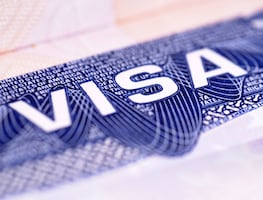Más Información

Senado aprueba en fast track reformas a Ley de Amparo y turna al Ejecutivo; oposición acusa simulación en retroactividad

Embajador Esteban Moctezuma responde a congresista de EU; pide "diálogo constructivo" tras críticas a Sheinbaum por relación con Cuba
On Sunday, women in Saudi Arabia hit the roads, ushering in the end of the world’s last ban on female drivers , long seen as an emblem of women’s repression in the deeply conservative Muslim kingdom.
“It’s a beautiful day,” businesswoman Samah al-Qusaibi said as she cruised around the eastern city of Khobar just after midnight, with police looking on. “Today we are here,” she said from the driver’s seat. “Yesterday we sat there,” she added, pointing to the back.
The ban’s end, ordered last September by King Salman , is part of sweeping reforms pushed by his powerful son, Crown Prince Mohammed bin Salman , in a bid to transform the economy of the world’s top oil exporter and open up its cloistered society.
“It is our right and finally we took it. It is only a matter of time for the society to accept it, generally,” said Samira al-Ghamdi, a 47-year-old psychologist from Jeddah, as she drove herself to work.
The lifting of the prohibition, which for years drew international condemnation and comparisons to the Taliban in Afghanistan , was welcomed by Western allies as proof of a new progressive trend in Saudi Arabia .
But it has been accompanied by a crackdown on dissent, including against some of the very activists who previously campaigned against the ban . They now sit in jail as their peers take to the road legally for the first time.
The number of new drivers remains low , as women with foreign permits were only able to convert them starting this month.
An interior ministry spokesman declined to specify how many licenses had been issued but said 120,000 women had applied, from an eligible pool of around 9 million .
Most will have to train at new state-run schools, with 3 million women expected to be on the roads by 2020 .
Some still face resistance from conservative relatives, and many accustomed to private drivers say they are reluctant to take on the country’s busy highways.
Concerns that women drivers could face abuse in a country where strict segregation rules usually prevent women from interacting with unrelated men prompted a new anti-harassment law last month.
The Interior Ministry plans to hire women traffic police for the first time, but it is unclear when they will be deployed.
The decision to lift the ban in the kingdom—where once-forbidden cinemas and concerts have also returned—is expected to boost the economy .
Saudi stocks rose nearly two percent on Sunday and insurance firms made solid gains, as demand from women is expected to boost the automotive sector .
The change should also save families billions of dollars on chauffeurs while encouraging more women into the workforce and raising productivity, if only modestly at first.
Auto companies produced theatrical ads to mark the ban’s end, and private parking garages designated “ ladies ’” areas with pink signage.
Much of the kingdom’s overwhelmingly young population supports Prince Mohammed’s reforms , but many Saudis fear their speed could provoke a backlash from religious conservatives once seen as dominant.
The clerical establishment has closed ranks with the ruling Al Saud family , with the Council of Senior Religious Scholars tweeting support on Sunday for regulations that “preserve Islamic values”.
sg












